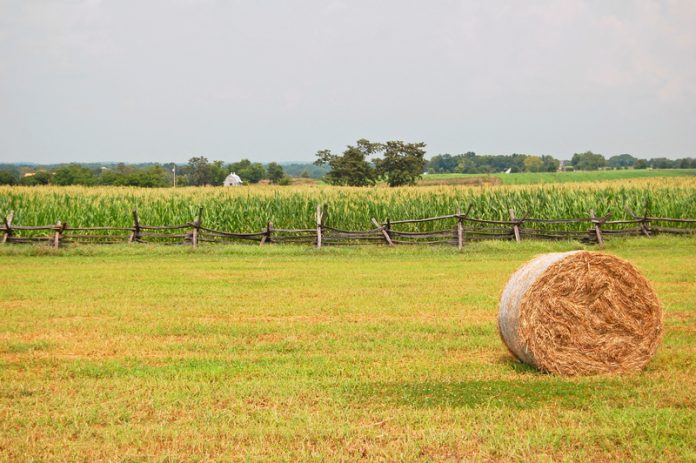The work of the National Institute of Food and Agriculture (NIFA) is examined here by Open Access Government
The National Institute of Food and Agriculture (NIFA) is a federal agency within the United States Department of Agriculture (USDA). The agency administers federal funding to address the agricultural issues impacting people’s daily lives and the nation’s future. To provide both leadership and funding for programmes that advance the progression of agriculture-related sciences, NIFA invest in and support initiatives that ensure the long-term viability of agriculture. They do this while applying an integrated approach to ensure that ground-breaking discoveries in agriculture-related sciences and technologies reach the people who can put them into practice.
NIFA collaborates with leading scientists, policymakers, experts and educators in organisations throughout the world to find innovative solutions to the most pressing local and global problems. These collaborations create spaces for constant scientific progress, made through discovery and application. Among the most important progressions in 2018 NIFA focuses on:
- The advances in the competitiveness of American agriculture;
- Bolstering the U.S. economy;
- Enhancing the safety of the nation’s food supply;
- Improving the nutrition and well-being of American citizens;
- Sustaining natural resources and the environment and;
- Building energy independence.
It is clear to see that NIFA programmes aim to cover a wide spread of issues, while also serving as a vital contributor to science policy decision-making. NIFA has taken significant strides toward enhancing the impact of food agriculture, natural resources and human sciences in recent years and now more than ever it is vital to strike the balance between practising sustainable agriculture while also increasing productivity and production efficiency. The U.S. Department of Agriculture is propelling its scientists to develop research-based technologies that can make this possible.
February 2018 marked the announcement of The U.S. Department of Agriculture’s (USDA) NIFA support for the Alfalfa Forage and Research Program (AFRP) with approximately $2.1 million in available funding to support AFRP. This programme funds research and extension programmes that improve alfalfa forage, seed yields and helps producers apply best practices.
“Alfalfa research helps ensure there are dependable and affordable supplies of forage available for dairy and other livestock producers around the country,” (1) states NIFA Director, Dr Sonny Ramaswamy. “This crop is also a part of conservation production systems that help protect fields from water erosion and provide a natural supply of nitrogen to the soil for use by other crops.” Their principal goals are to increase alfalfa yields and quality; improve harvest and storage systems; develop methods to estimate forage yield and quality to support marketing while reducing producer risks and; explore new and novel uses for alfalfa.
Success in previous projects across America spurs on scientists to become innovators who explore new ways of tackling problems from all angles. For example, January 2017 saw several announcements regarding NIFA and the diverse allocation of funding and collaborative research:
- Four grants totalling more than $13.6 million allocated to combat a scourge on the nation’s citrus industry, citrus greening disease, aka Huanglongbing.
- $18.9 million in funding for eligible 1890 land-grant colleges and universities to obtain or improve agricultural and food sciences facilities and equipment. The 1890 Facilities Grant Program helps the eligible institutions educate the future workforce in the food; agricultural and human sciences job sectors.
- The availability of $8.8 million in funding to support agricultural science education at Hispanic-serving institutions (HSIs). “Hispanic students earn only 8% of the degrees awarded in science, technology, engineering and math (STEM)”, states Director Ramaswamy. “These investments help HSIs promote STEM education and agricultural industry careers to all their students, including Hispanic students.”
In the same vein, NIFA tackles a few “challenge areas” using collaborative research and funding. The AFRI Resilient Agroecosystems in a Changing Climate Challenge Area is one of these and focuses on understanding the interaction between climate variability and agricultural production systems, so that we can develop the plants, animals and management systems that will be robust and productive under changing environmental conditions.
Research results from this challenge area will lead to improved management systems and crop varieties that consider the risks associated with a more variable environment. Another long-term outcome of this challenge area is reducing the environmental impact, while maintaining a productive food, feed, fibre and fuel system. This is a prime example of studies exploring maximised productivity alongside minimised environmental damage, it is becoming more and more obvious to the agricultural sector that environmental impacts need to be minimised, while also developing new ways to deal with the results.
Overall, it is evident that these above initiatives and programmes support their aims. In a press release, we find out that: “NIFA’s mission is to invest in and advance agricultural research, education and extension that solve societal challenges.” Their programmes propel cutting-edge discoveries from research laboratories to farms, classrooms, communities and back again. Through three main federal-funding mechanisms, NIFA supports programmes that address key national challenge areas.
Open Access Government











